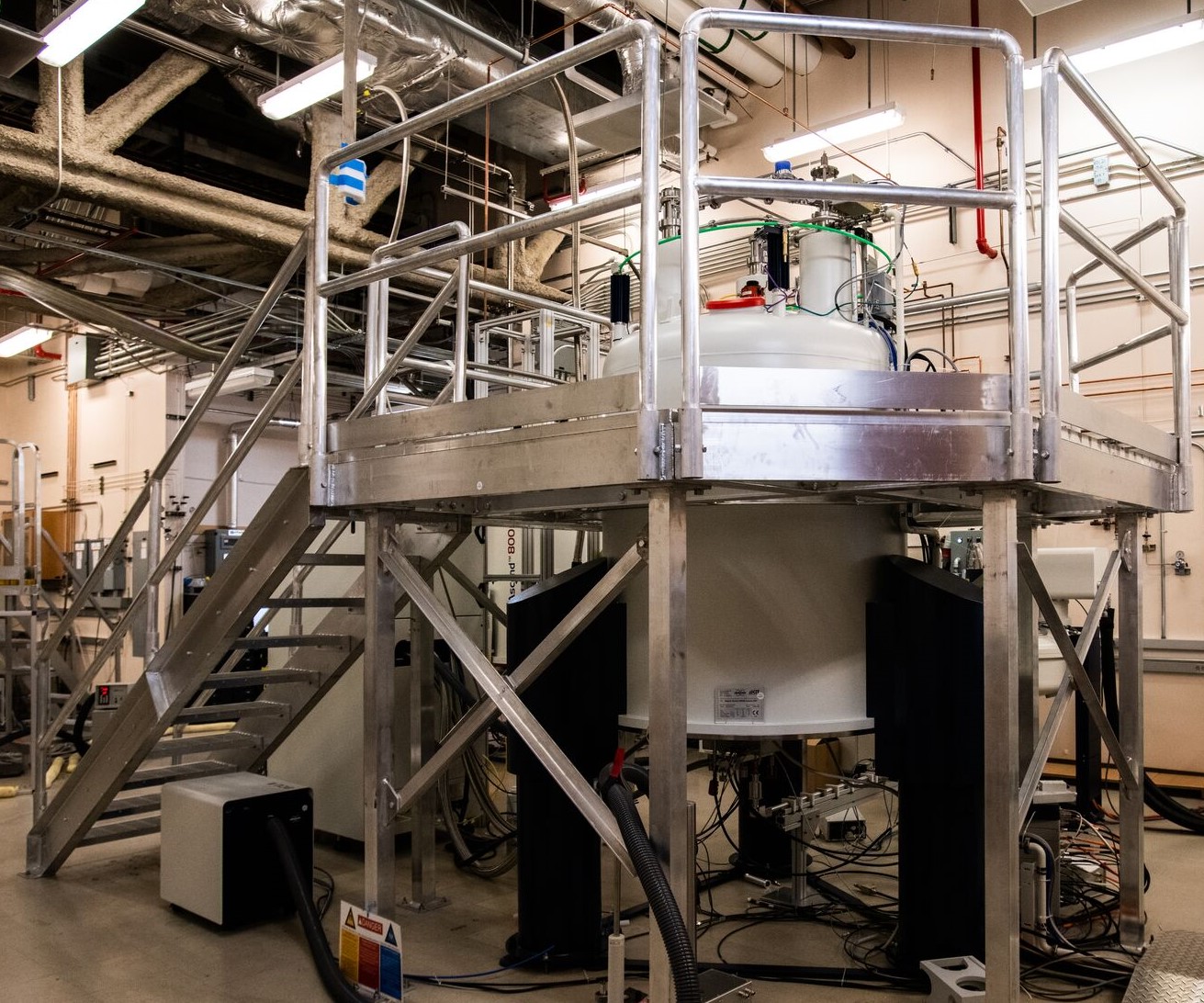Magnetic Resonance Laboratory
What is nuclear magnetic resonance spectroscopy?

Nuclear magnetic resonance spectroscopy, commonly known as NMR, uses magnetic fields to obtain physical and chemical information about materials, molecules, and their environments. The same fundamental concept is used to measure living things through magnetic resonance imaging, or MRIs. NMR is a core technique in chemistry, chemical engineering, and materials science. In fact, most chemists will use NMR at some point in their career.
What is inside the Energy Sciences Center magnetic resonance laboratory?
The Energy Sciences Center features a laboratory with multiple NMR spectrometers, which can be used to examine materials as solids or solutions at a range of temperatures. Many of the instruments can measure both solid and liquid samples, depending on their configuration.
Researchers, ranging from NMR specialists to visiting students, run NMR experiments to study the chemicals that play critical roles in catalysis, energy storage devices, mineral transformations, and more. Simple experiments run in a matter of a few minutes, while others may take days.
The lab also contains a high-field dynamic nuclear polarization (DNP)-NMR spectrometer. The DNP-NMR is a flagship instrument and broadens the scope of NMR research at Pacific Northwest National Laboratory. The DNP technique allows researchers to analyze species with naturally weak NMR signals or that are present in low concentrations. This instrument, which exclusively measures solid samples, represents a powerful enhancement of experimental capability.